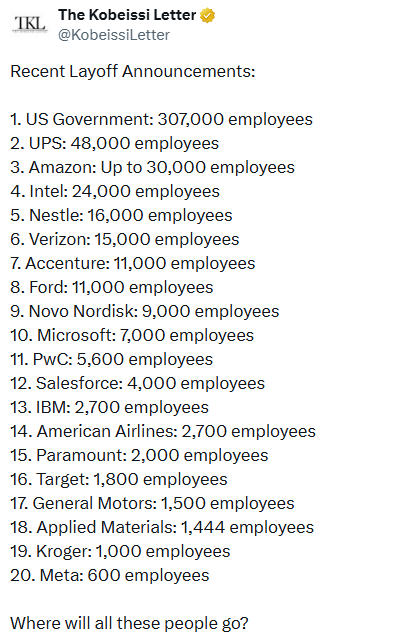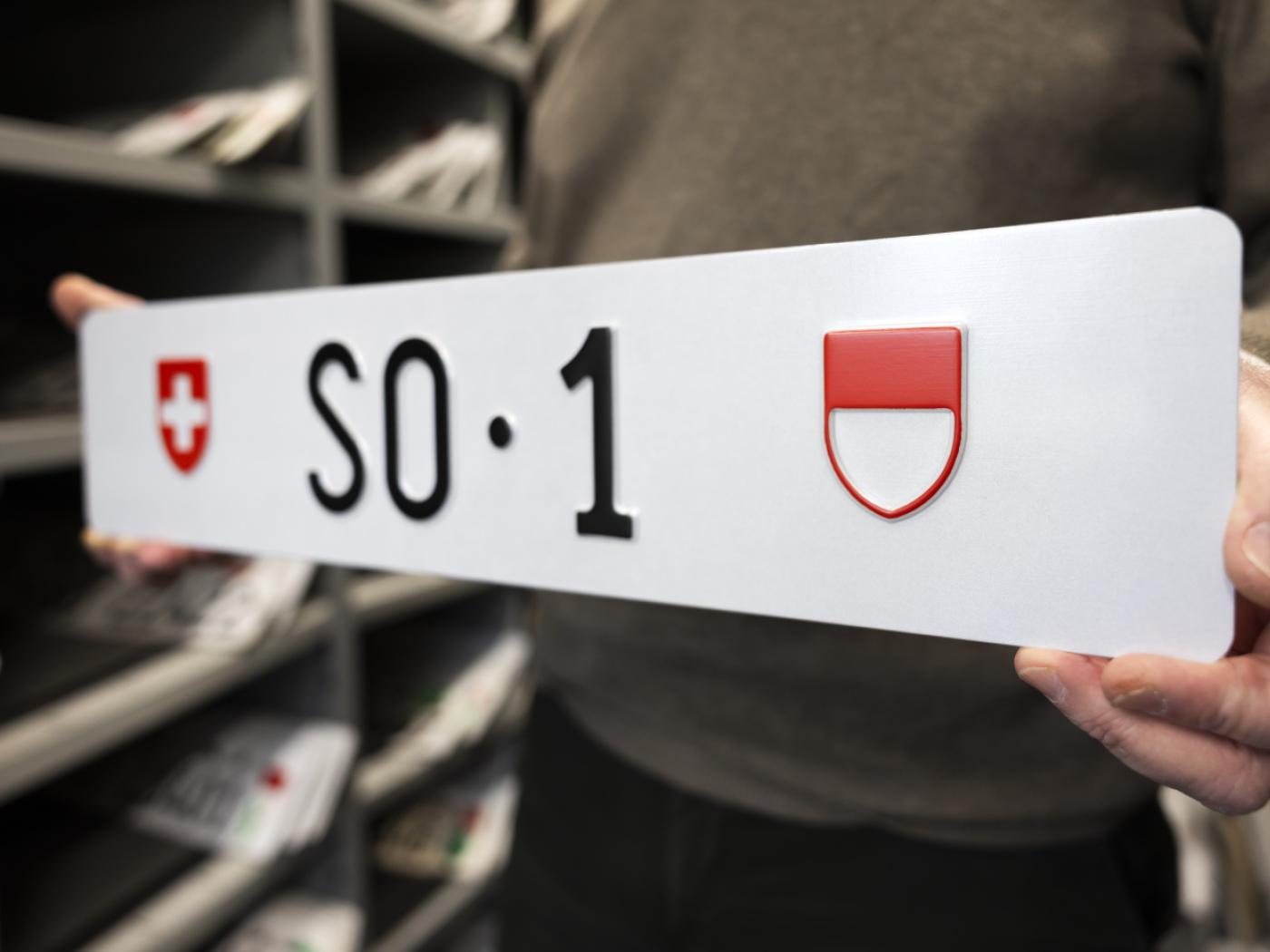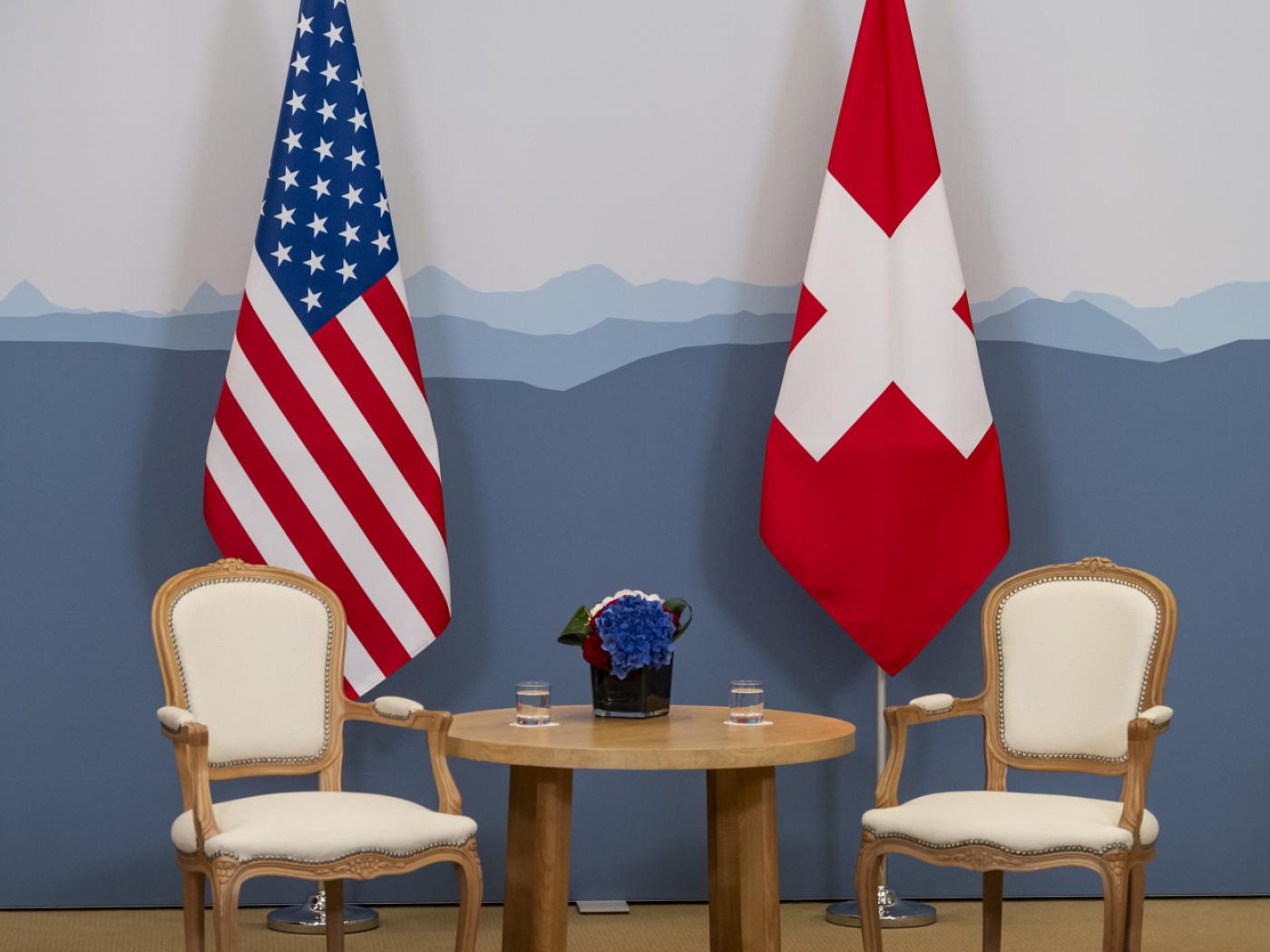We do not like Purchasing Power or Real Effective Exchange Rate (REER) as measurement for currencies. For us, the trade balance decides if a currency is overvalued. Only the trade balance can express productivity gains, while the REER assumes constant productivity in comparison to trade partners.
Who has read Michael Pettis, knows that a rising trade surplus may also be caused by a higher savings rate while the trade partners decided to spend more. This is partially true. Recently Europeans started to increase their savings rate, while Americans reduced it. This has led to a rising trade and current surplus for the Europeans. But also to a massive Swiss trade surplus with the United States, that lifted Switzerland on the U.S. currency manipulation watch list.
To control the trade balance against this “savings effect”, economists may look at imports. When imports are rising at the same pace as GDP or consumption, then there is no such “savings effect”.
After the record trade surpluses, the Swiss economy may have turned around: consumption and imports are finally rising more than in 2015 and early 2016. In March the trade surplus got bigger again, still shy of the records in 2016.
Swiss National Bank wants to keep non-profitable sectors alive
Swiss exports are moving more and more toward higher value sectors: away from watches, jewelry and manufacturing towards chemicals and pharmaceuticals. With currency interventions, the SNB is trying to keep sectors alive, that would not survive without interventions.
At the same time, importers keep the currency gains of imported goods and return little to the consumer. This tendency is accentuated by the SNB, that makes the franc weaker.
Texts and Charts from the Swiss customs data release (translated from French).
Exports and Imports YoY DevelopmentIn August 2019, Swiss exports fell for the second month in a row. Down 4.3% year-on-year, they dropped below 19 billion francs. On the other hand, imports rose by 3.4% and thus regained their level at the beginning of the year. The trade balance closed with a surplus of 1.2 billion francs. In short ▼ Exports: all major markets in red figures ▼ Exports: Negative trend for machinery and electronics ▲ Asian imports: record level |
Swiss exports and imports, seasonally adjusted (in bn CHF), August 2019(see more posts on Switzerland Exports, Switzerland Imports, )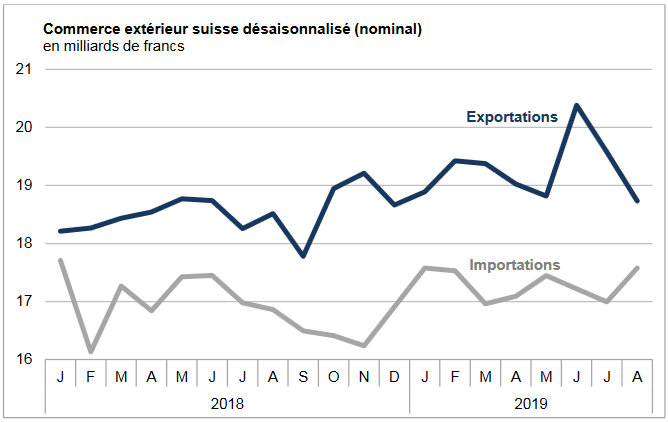 Source: newsd.admin.ch - Click to enlarge |
Overall evolutionIn August 2019, seasonally-adjusted exports contracted by 4.3% or 846 million francs (actual: -4.4%). With this second consecutive decline, they recorded their lowest level of the year. Imports are up 3.4% (real: + 1.0%); since the beginning of the year, however, they have stagnated. The trade balance surplus reached only CHF 1.2 billion in August 2019. |
Switzerland Trade Balance, August 2019(see more posts on Switzerland Trade Balance, ) Source: investing.com - Click to enlarge |
ExportsExports to Germany: 546 million francs fall in one month As in the previous month, exports of chemical and pharmaceutical products fell in August 2019 (-5.0%), including medicines (-501 million francs) and immunological products (-201 million). The machinery and electronics sector also suffered a setback (-5.1%), while the number two in the export sector recorded a negative trend since the beginning of the year, which has increased over the last few months. On the other hand, watchmaking and precision instrument sales posted an increase. Swiss deliveries fell in the three main markets. The biggest drop came from Europe (-6.5%), where the plunge of Germany (-14% or -546 million francs, pharma) did not go unnoticed. Shipments to Austria, on the other hand, increased by a quarter (+98 million). North America (-1.9%) and Asia (-1.8%) weakened at the same pace. Among the Asian countries, the decline in Singapore (-16%) and Hong Kong (-17%) contrasted with China’s 10% rise. |
Swiss Exports per Sector August 2019 vs. 2018(see more posts on Switzerland Exports, Switzerland Exports by Sector, )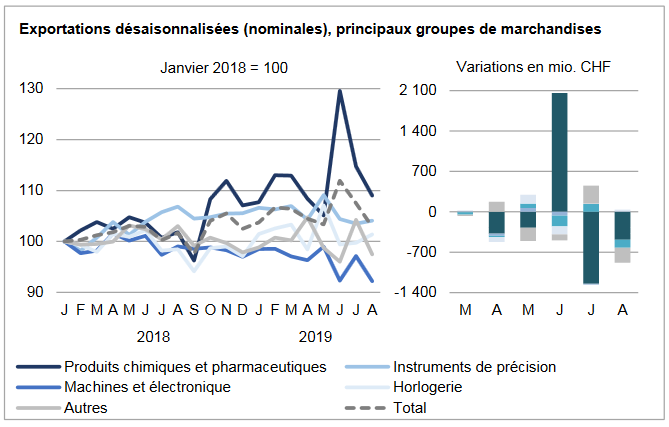 Source: newsd.admin.ch - Click to enlarge |
ImportsJewelery boosts imports Other imports of jewelery and jewelery (other goods group) – of which the increase (+307 million francs) has generated half of the total increase – those of chemicals and pharmaceuticals (+107 million) have also taken the elevator. Here, the jump of medicines (+384 million) contrasted with the drop in active ingredients (-296 million). Down respectively 3.0 and 1.9%, metals (fourth consecutive decline) as well as machinery and equipment. electronics continue on their negative trend in previous months. In August 2019, imports from major markets increased, although to a very large extent. Arrivals from Asia, which rose 4.9% mainly based on China (+107 million francs), reached a record level. North America gained 1.6% (USA: + 2.9%) against 0.8% for Europe. On the Old Continent, the evolution by country has proved disparate, with a rise of 205 million francs for France and a fall of 210 million for Italy. The United Kingdom was not outdone (+108 million), posting the fourth consecutive monthly increase. |
Swiss Imports per Sector August 2019 vs. 2018(see more posts on Switzerland Imports, Switzerland Imports by Sector, )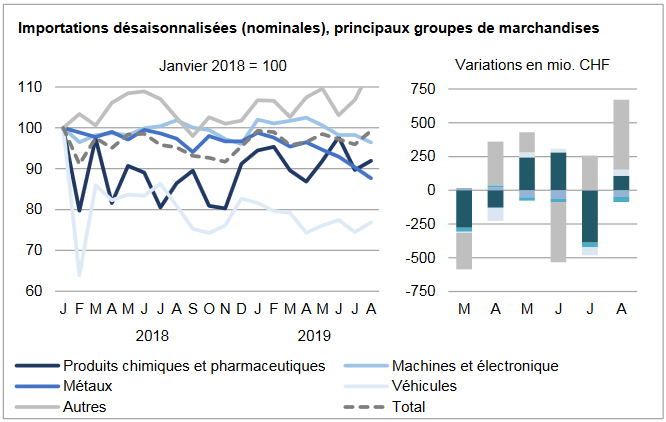 Source: newsd.admin.ch - Click to enlarge |
Tags: newsletter,Switzerland Exports,Switzerland Exports by Sector,Switzerland Imports,Switzerland Imports by Sector,Switzerland Trade Balance























